Interdisciplinary Capstone projects conducted at WEST Center
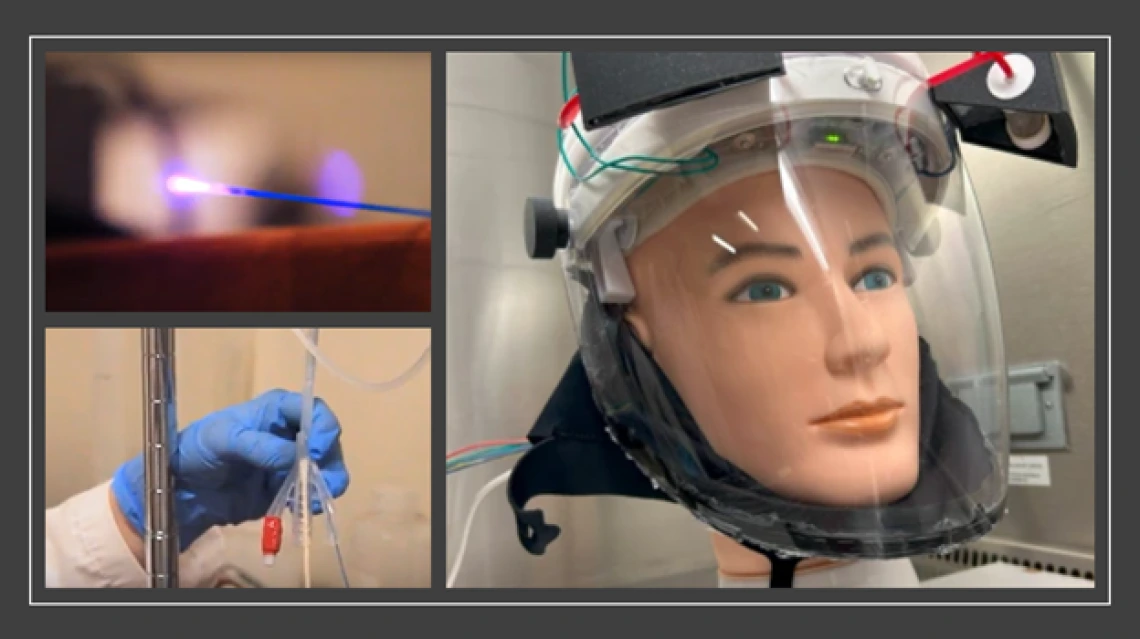
The University of Arizona’s Engineering 498 Interdisciplinary Capstone is a required senior course that creates university-industry partnerships. Companies tackle real-world problems, and UA engineering students in their final year as undergraduates, are provided with impactful real-world experience. In spring 2025, two Engineering Capstone teams worked on projects at WEST Center. Both teams sought to use light to make hospitals healthier for patients and providers.
Self-sterilizing Enclosed Face Shield for Healthcare Workers
The first project with experiments conducted in WEST Center focused on a face shield designed for improved protection from airborne contaminants. As stated by the student team in their project summary, “The COVID-19 pandemic underscored the critical need for advanced personal protective equipment (PPE) to shield health care workers and individuals in high-risk environments.” Frontline workers, health care professionals, and others face dangerous exposure to airborne pathogens. While traditional face shields offer a barrier to viruses and bacteria, they don’t address the threat of contamination on their own surfaces.
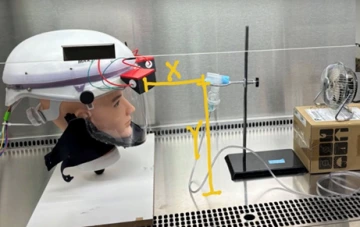
Face shield testing utilized a closed environment to prevent external contamination.
This Capstone team developed and tested a face shield that actively eliminates pathogens from its surface. It is a fully enclosed, self-sterilizing face shield intended to mitigate pathogen exposure and improve respiratory protection. The design incorporates an integrated sterilization system featuring 222 nanometer light as well as mirrors to evenly distribute light and ensure complete disinfection coverage. The selected light effectively inactivates pathogens while remaining safe for human exposure, and external surfaces are automatically disinfected at timed intervals, eliminating the need for manual cleaning.
Simulations at the WEST Center allowed the student team to refine their design, identify weaknesses, and enhance effectiveness. Rigorous tests were conducted in a closed and sterile environment. With external contamination minimized, a nebulizer dispersed virus onto the face shield prototype to simulate airborne contamination. Experiments at WEST helped to transform an initial concept into a well-validated design.
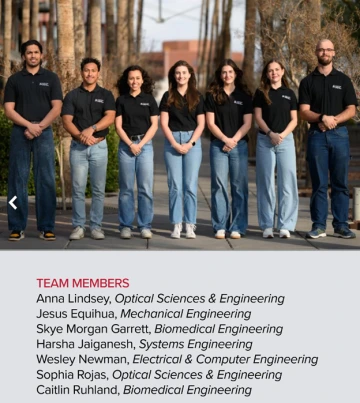
Face Shield Project team. Image courtesy of UA College of Engineering.
Results showed 90% effectiveness in decontamination at the selected light dosage. As noted by the team, “The final prototype demonstrates a practical and innovative solution for pandemic preparedness, offering sustainable protection for health care workers, laboratory personnel and frontline responders while reducing reliance on disposable PPE.” Overall, the project demonstrated how simulation-driven engineering can facilitate more cost effective and impactful solutions in real world applications.
The Face Shield Project webpage contains more information about the team, sponsor, and process, as well as a student video about the project.
Self-Disinfecting Urinary Catheters Using Safe Antimicrobial Light
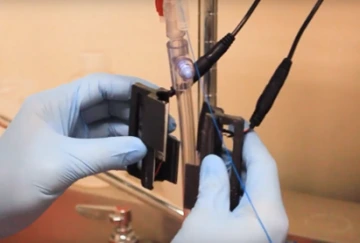
An LED clip for easy attachment to catheter tubing was developed and tested.
The second Capstone team that worked at WEST investigated the use of antimicrobial light for catheter disinfection. Approximately 15-25% of hospitalized patients receive urinary catheters, putting them at risk of urinary track infection (UTI). In fact, UTIs are one of the most common hospital-acquired infections making them a major health care concern.
This team hoped to develop an innovative solution to minimize UTIs using, not pharmaceuticals, but 405 nm LED light. As stated by the team, “These (light sources) effectively impede bacterial growth while remaining safe for human tissue in controlled doses.
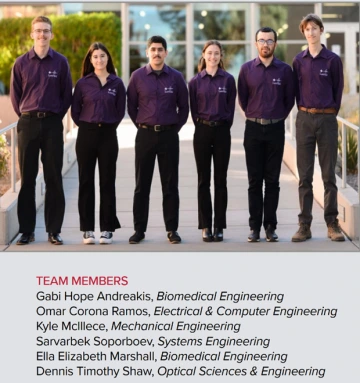
Catheter Project team. Image courtesy of UA College of Engineering.
There were four components to the self-disinfecting urinary catheter design: 1) catheter; 2) a high powered 405 nm light source; 3) optical fiber line; and 4) diffuse coating at end of fiber. Later in the project, the team proposed and tested an LED clip to put on catheter tubing for disinfection. Partnering with WEST researchers, the team carried out efficacy testing on the final prototype to assess its effectiveness in reducing infection risks.
The Catheter Project webpage contains more information about the team, sponsor, and process, as well as a student video about the project.
Special thanks to project sponsors, Neal Brock and Dr. Sharon Keene. Additional thanks to WEST staff - especially researcher Dr. Kelly Bright - for student guidance.

